Interstellar performance meets large WQHD screen
The TUXEDO Stellaris 17 is a high performance desktop replacement in a subtle business-class looking and relatively lightweight 17.3-inch partial aluminum chassis.
Its high-end hardware includes NVIDIA's fastest mobile GPUs up to the GeForce RTX 3080 in its highest TGP specification of up to 165 watts and latest high-end CPUs from Intel and AMD: Depending on the preference, either Intel's new Tiger Lake Core i7-11800H or AMD's Ryzen 9 5900HX can be chosen.
In addition to the new high-resolution WQHD display with 2560 x 1440 pixels and 165 Hz refresh rate, the lightning-fast universal port Thunderbolt 4 (Intel-only) also makes its way into under the sturdy hood of the 17-inch Linux gaming notebook.
Business-ready design and mechanical RGB backlit keyboard
The TUXEDO Stellaris 17 follows the principle of "wolf in sheep's clothing" and relies on a subtle yet professional look in a solid partial aluminum chassis, which also allows its usage in the office, school or lecture hall without attracting smirking looks.
The brushed aluminum display lid and the rubberized palm rest not only give the 17-inch-device a high quality and pleasant feel, but also increase stability and reduce the susceptibility to fingerprints on the base unit.
The slim display bezels result in a very compact footprint of former 15.6 inch notebooks of only 39.6 x 26.1 cm, which together with the relatively low weight of only 2.5 kg makes the Stellaris 17 one of the most portable devices in its class of high performance desktop replacement laptops.
The highlight of the TUXEDO Stellaris 17 is the optomechanical keyboard, which appeals to gamers and frequent writers alike with a desktop-like typing feel and clearly defined key strokes and pressure point. The RGB backight can be set for any of the octagon-shaped keys separately to any color and in 4 brightness levels, making it much easier to work and play in dim environments.
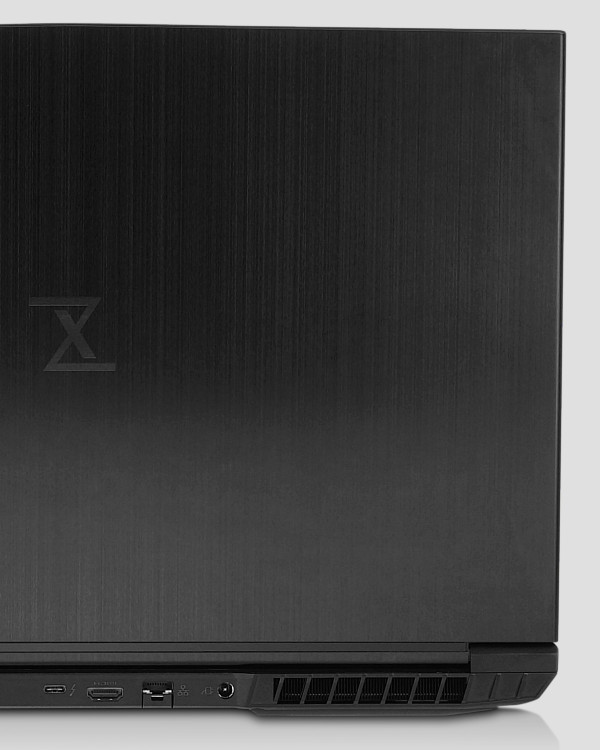
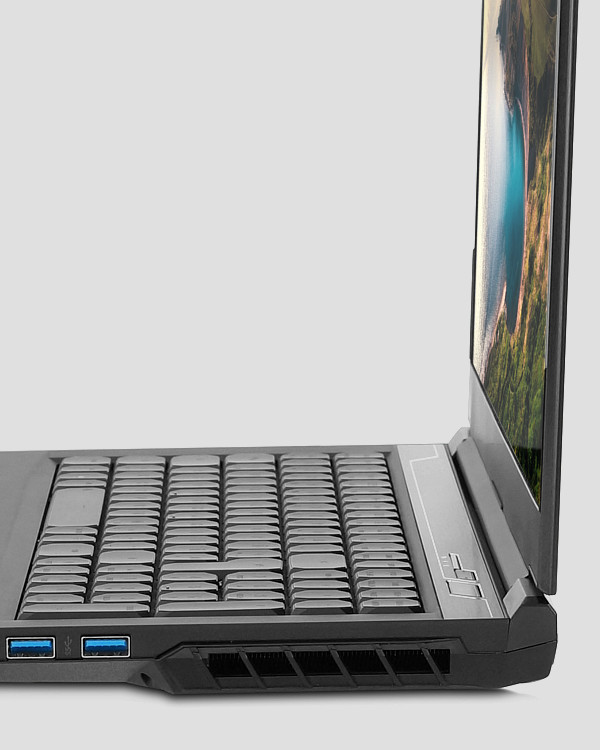
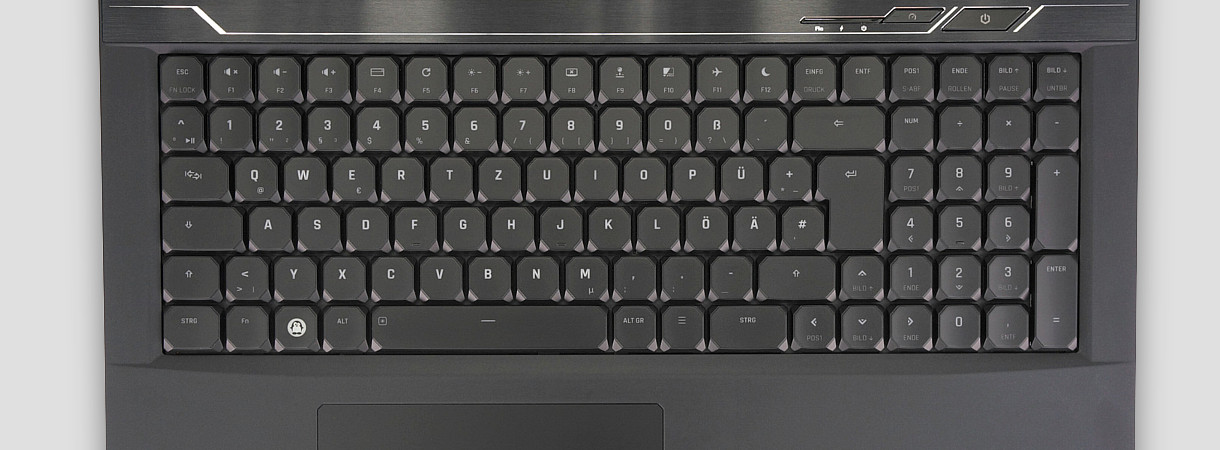
Thunderbolt 4 and SD Card Reader
Depending on the selected CPU, the TUXEDO Stellaris 17 is equipped with a fast USB-C 3.2 Gen2 port (AMD) or even with the universal all-rounder Thunderbolt 4 (Intel) at the back of the device.
In addition to maximum data transfer speeds of up to 40 gigabits per second and a charging power delivery of 15 watts for peripherals, Thunderbolt 4 also allows connecting up to two 4K monitors via the integrated DisplayPort 1.4 signal.
Regardless of the CPU choice , 3 additional USB ports (2x USB-A 3.2 Gen1, 1x USB-A 3.2 Gen2) as well as an SD card reader are on board to supply the needs of content creators. The RJ45 LAN port, microphone input and headphone output, as well as the obligatory Kensington lock, round off the TUXEDO Stellaris 17's connectivity portfolio.

From left to right: Kensington Lock, USB-A 3.2 Gen2, microphone in, headphone out

From left to right: USB-C (Intel: Thunderbolt 4 | AMD: 3.2 Gen2), HDMI 2.1, Gigabit Ethernet, power connector

From left to right: SD memory card reader, 2x USB-A 3.2 Gen1
AMD Ryzen vs Intel Tiger Lake:
A tough decision to make
The TUXEDO Stellaris 17 offers the customer a difficult choice:
Intel Core i7-11800H or the AMD Ryzen 9 5900HX?
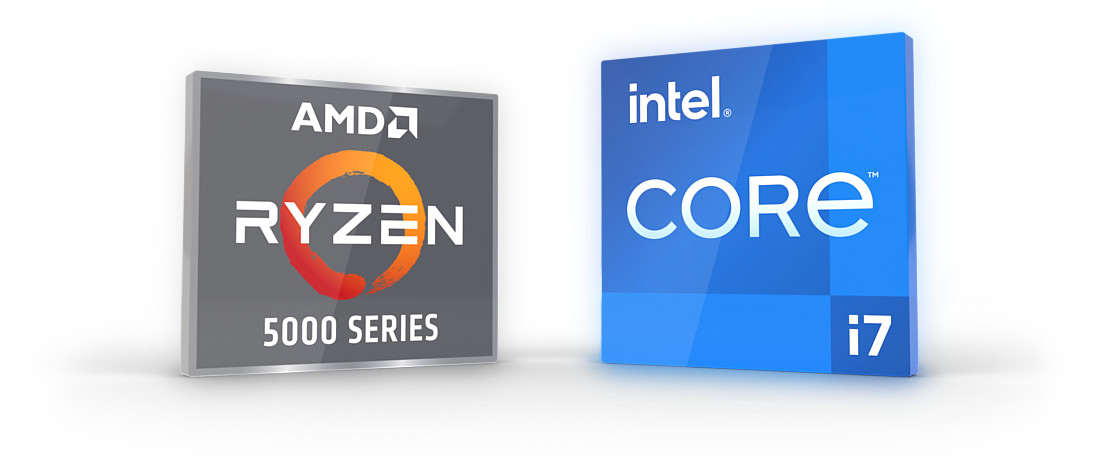
Thanks to the new Tiger Lake architecture and efficient 10nm SuperFin manufacturing process the Intel Core i7-11800H eight-core processor does not only outperform its predecessor Core i7-10870H by far, but also catches up with AMD's highly decorated Ryzen APUs.
However, the Ryzen 9 5900HX with 8 cores / 16 threads does not have to hide behind its opponent at all: While the Core i7-11800H is on par in single-core performance, the AMD processor is slightly to noticeably ahead in multi-core workloads - depending on the TDP level.
For gaming, the i7-11800H is the best choice. If your focus is on content creation though, the Ryzen 9 5900HX benefits from its better energy efficiency in terms of multi-core performance - at least at lower to medium CPU power limits.
At higher powerlimits though Intel's Tiger Lake chip is able to fully close the performance gap! To provide these high levels of performance the Core i7-11800H features liquid metal between its die and heat sink as maximally effective thermal interface material, which cannot be applied on the Ryzen APU due to safety reasons in terms of different chip layouts on the mainboard.
Three high-end CPUs, but only one slot available!
So it's up to you to make to decide: AMD or Intel. What will you choose?
Highest graphics performance
thanks to maximum TGP
For interstellar graphics performance, the 17-inch gaming notebook is equipped with the fastest mobile graphics card on the market: The NVIDIA GeForce RTX 3080 in its maximum TGP configuration with up to 165 watts (incl. 15 watts Dynamic Boost) of power and whopping 16 GB GDDR6 VRAM.
This makes the TUXEDO Stellaris 17 one of the fastest gaming notebooks currently available and offers highest performance reserves for high-resolution gaming on the new 165 Hz WQHD display.
For a more balanced price-performance ratio, the NVIDIA GeForce RTX 3070 with up to 140 watts and 8 GB VRAM as well as the entry-level into the high-end segment, the GeForce RTX 3060 with a maximum of 130 watts and 6 GB VRAM, are also available.
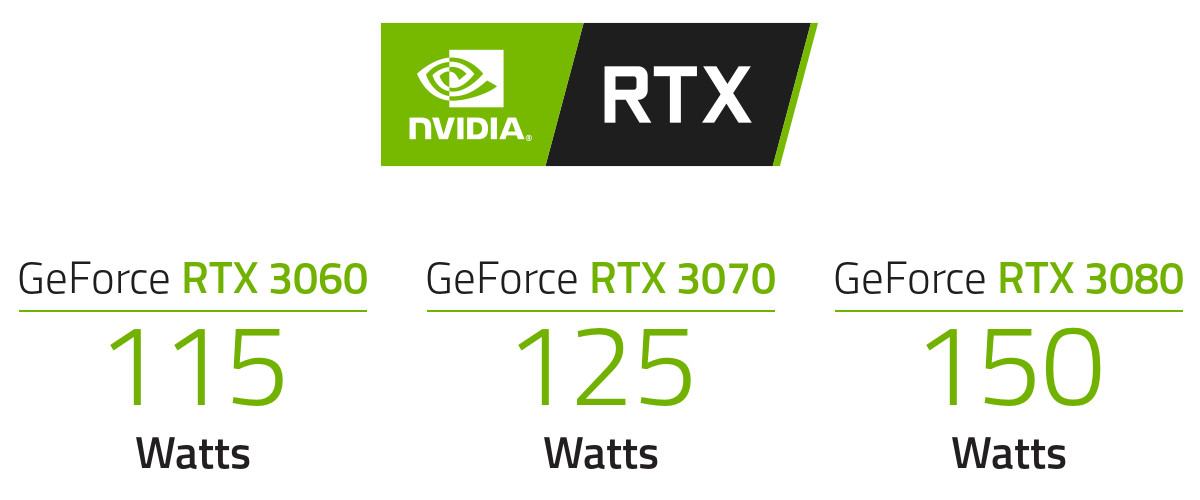
165 Hz High-Resolution Gaming in 3K
From great power comes great resolution - The TUXEDO Stellaris 17's high-end graphics performance offers plenty of reserves for high-resolution gaming and thus allows upgrading the built-in display:
To enjoy a crisp image quality despite the big 17.3 inch screen, the Linux gaming laptop integrates a WQHD IPS display with a resolution of 2560 x 1440 pixels and a blazingly high refresh rate of 165 Hz to fulfill highest gaming demands.
Compared to many standard Full HD displays (1920 x 1080), the 34 % higher pixel density shows its strengths not only in gaming, but especially in everyday use: Fonts, high-resolution images or graphics look very sharp-edged and rich in detail, even small text is comfortably legible without straining the eyes.
The screen brightness of around 350 nits as well as the color gamut of around 95% sRGB provide a vibrant and rich-in-contrast image that is not also well suited for gaming, but also for content creators in the fields of photo and video editing.
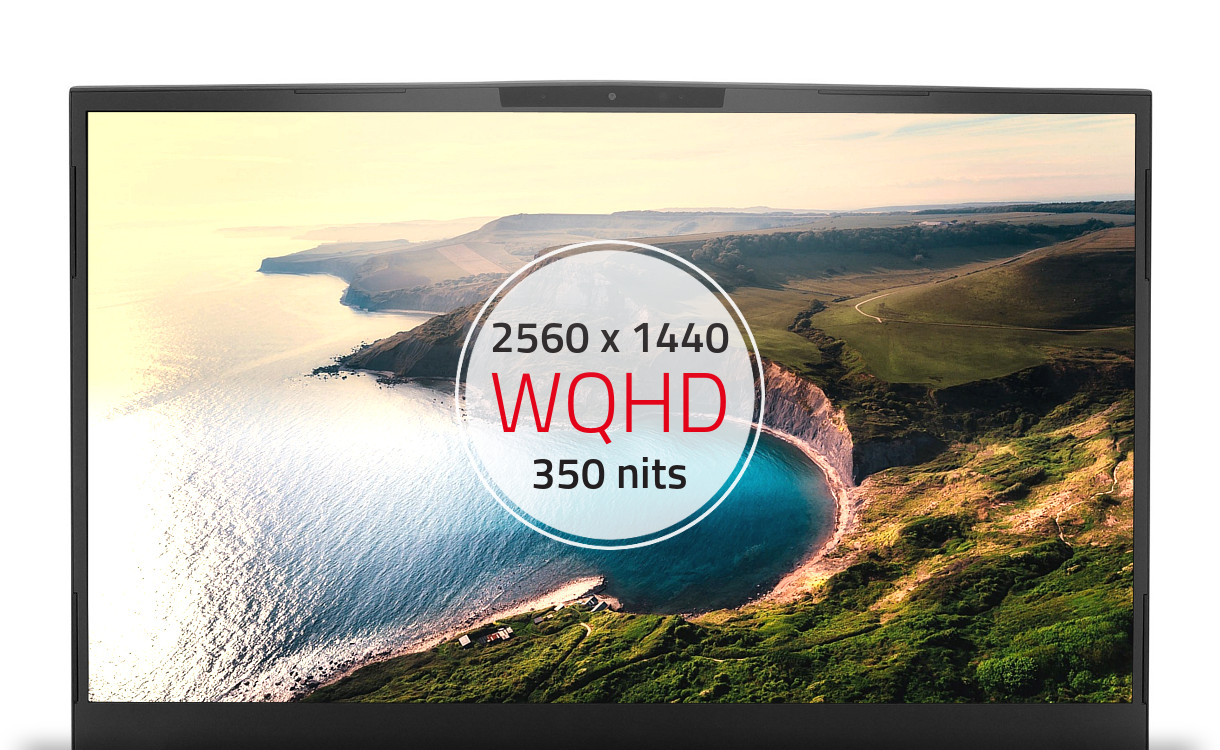
Up to 7 hours of battery life
Mobile use is not the core competence of a large, powerful desktop replacement notebook. Nevertheless, the TUXEDO Stellaris 17 offers battery life for about 6 hours under realistic working conditions with the use of Wifi, writing emails and text editing and medium display brightness settings. In idle state maximum runtimes of up to 7 hours are achievable.
The 62 Wh lithium polymer battery, which is internally screwed for future repairability, is charged via the 230 Watt power supply, which provides the 17 inch Linux gaming notebook with the energy needed for full performance.
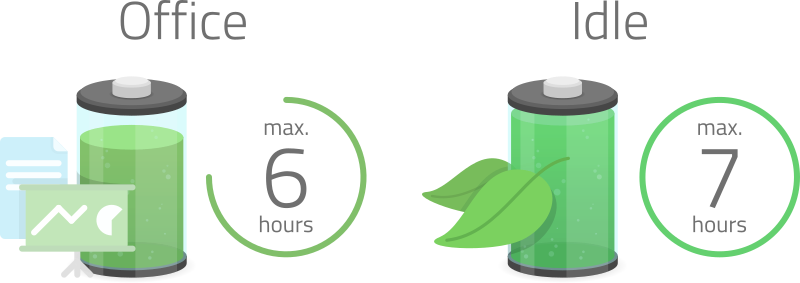
We are personally there for you Monday to Friday from 9 am to 1 pm and from 2 pm to 5 pm (German time). But also outside these times, you can contact our team with your request by e-mail. You will receive confirmation of receipt within approximately 15 minutes. If not, please feel free to contact us by phone. Please include your order number, the model name of your laptop or PC and as detailed a description of your request as possible. The more details you give us, the faster we can process your request!

